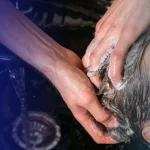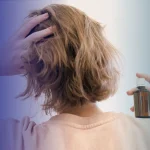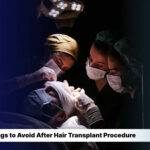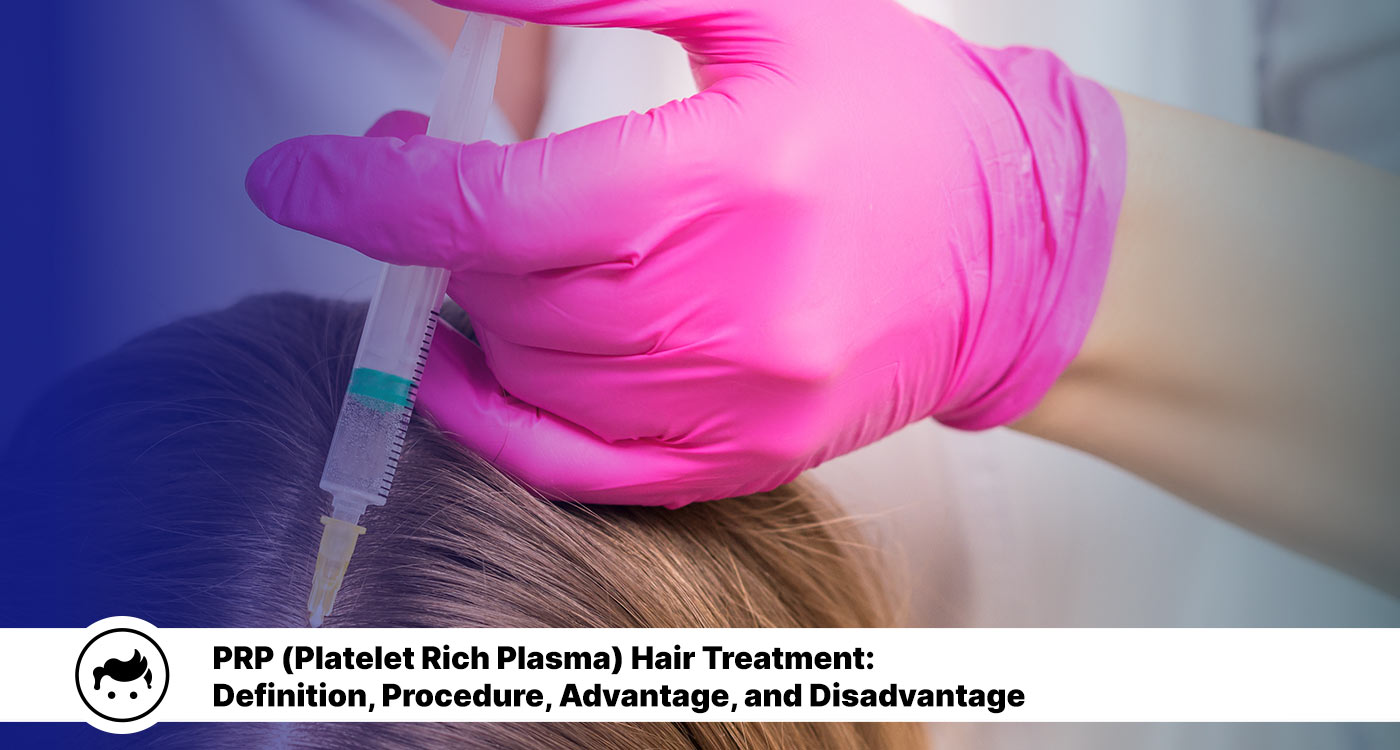
PRP Hair Treatment is a revolutionary procedure that has the potential to provide people with a full head of lush, healthy hair. The treatment offers an effective solution for people suffering from thinning or balding hair by using one’s blood-derived platelet-rich plasma (PRP) and injecting it directly into the scalp. The process involves collecting a sample of an individual’s blood which is then spun in a centrifuge to separate the PRP before it is injected into the desired area. It is important to be aware of the potential risks, such as infection and scarring. Ultimately, however, the immense benefits far outweigh any potential disadvantages, making PRP Hair Treatment a great choice for anyone looking to restore self-confidence through enhanced hair growth.
Table Of Content
Platelet-rich plasma (PRP) is a painless, low-impact method of jumpstarting hair growth. It entails extracting a blood sample and filtering out the PRP component from it. The platelet-enriched serum is injected into balding or thinning patches of the scalp to promote new follicle development and help existing hairs become thicker and healthier once isolated.
PRP hair treatment is a type of medical procedure that helps stimulate new hair growth. It uses the patient’s blood to create a serum or concentrated plasma injected into their scalp. The serum contains platelets and other growth factors which help promote new hair growth. The process begins with a simple blood draw from the patient. The doctor then places the sample in a centrifuge machine, separating the platelet-rich portion of the blood. The concentrate is then transferred to another tube, combined with calcium chloride and an anticoagulant so it does not clot. Once ready, the mixture is injected directly into areas on the scalp that need more hair growth. The injections are usually done every four to six weeks until desired results are achieved. There are no side effects or risk of allergic reaction as the PRP serum comprises the patient’s cells. It reduces itching, dandruff, and scalp dryness while promoting healthy hair follicles and improving circulation since PRP has anti-inflammatory properties. Results vary depending on individual cases, but patients see visible results within three months after beginning treatments.
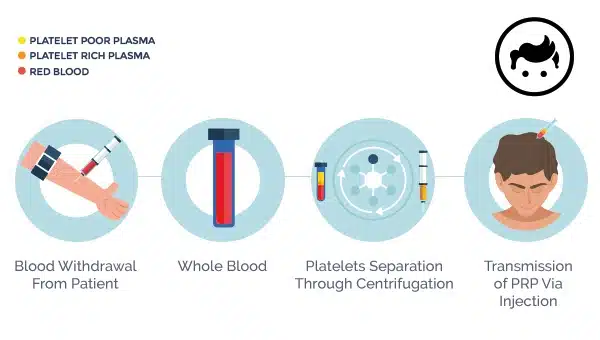
The cost of a Platelet-rich plasma (PRP) hair treatment session fluctuates greatly based on the location in which it is being administered and the quantity of treatments required for optimal results. The turkey hair transplant cost ranges anywhere from $500 to $2,000 per session. The specific cost is contingent upon the geographical region, the intricacies of the treatment, and various other considerations.
PRP Hair Treatment offers many benefits to anyone seeking a natural, non-invasive alternative to hair loss. Here are three of the most significant advantages: Non-surgical: PRP Hair Treatment is a non-surgical, natural treatment that does not require scalpels or incisions. Simply injecting a concentrated serum of platelet-rich plasma into the scalp is required for the operation. Minimal downtime: PRP Hair Treatment, unlike other treatments, has little recovery time. The majority of individuals quickly resume their daily activities following the surgery. Results persist for up to two years or more with PRP Hair Treatment. The serum is intended to stimulate new hair growth. Therefore its efficacy is observed gradually. Overall, PRP Hair Treatment is an efficient and successful treatment for hair loss. It is fast, painless, and yields permanent benefits. It is no surprise that it is such a popular option.
PRP Hair Treatment is a highly sought-after procedure for hair loss. However, there are some drawbacks associated with it as well. Firstly, PRP requires multiple treatments over time to achieve desired results, so patients need to make sure that they commit to the process and follow through on treatment plans. Secondly, PRP treatments are expensive depending on the individual’s location and provider. Finally, in rare cases, PRP causes complications such as infection and cyst formation. Therefore, individuals considering the treatment have to discuss potential risks with their healthcare provider beforehand.
Yes, there are side effects of PRP (Platelet Rich Plasma) Hair Treatment. It includes itching, redness, swelling, and tenderness at the injection site, as well as temporary hair loss around the area where the treatment was administered. More serious reactions, such as headaches, migraines, or allergic reactions, occur in some cases. It is important to discuss any potential risks with a doctor before undergoing the procedure
It isn’t easy to give an exact answer as to how many PRP Hair Treatment sessions one gets to see results, as it depends on the individual’s hair type and condition. Generally speaking, most people require at least three treatments for noticeable improvement, but some need more or fewer depending on their situation. Additionally, the effects of each session vary significantly from person to person, with some experiencing better results after their first treatment than others after their third. Ultimately, it is best to consult a qualified specialist who recommends a tailored plan for achieving desired results.
Clinique CMI and the London Orthopedic Clinic are examples of PRP hair treatment establishments offering PRP hair treatment. Clinique CMI is a medicinal practice that centers around different decorative and outward appearances methods, including hair regrowth. Similarly, the London Orthopedic Clinic is a healing focus taking care of skeletal and joint issues and offering scalp revitalization using PRP.
Yes, PRP (platelet-rich plasma) hair treatment is a medical procedure believed to help promote hair growth. The procedure involves taking a small sample of the patient’s blood, which is then processed to separate the platelets. The concentrated platelets are then injected into the scalp. The idea behind the treatment is that the platelets contain growth factors that stimulate hair growth and improve the overall health of the hair follicles. The procedure is non-surgical and relatively simple, and the platelet-rich plasma is derived from the patient’s blood, so there is no risk of an allergic reaction. However, keep in mind that the treatment is relatively new, and more research is needed to determine its effectiveness. Studies have shown mixed results regarding the effectiveness of PRP for hair loss, and more high-quality studies are needed to establish whether the treatment is effective. There are a few concerns about treatments as they are not FDA-approved, and not all practitioners are not medical doctors.
No, the results of PRP hair treatment are not permanent. PRP (Platelet-rich plasma) therapy for balding involves taking a sample of someone’s blood, preparing it to strengthen the platelets, and then introducing the high-platelet plasma back into the person’s scalp. The development elements in the plasma are thought to kindle fresh hair progress, yet the healing is rehashed to preserve the wanted results. Moreover, the consequence diverges depending on the patient’s hair loss root cause and type, the treatment method, and frequency, which is talked over with an authorized dermatologist.
Yes. Platelet-rich plasma (PRP) hair treatment is a therapy that uses a patient’s blood plasma to stimulate hair growth. Rich in growth factors and other nutrients, blood plasma is injected into the scalp to stimulate new hair growth and thicken existing hair. The growth factors in plasma stimulate the multiplication of hair follicles and the formation of new blood vessels, which increases blood flow to the scalp and improves hair’s health. Additionally, PRP treatment improves the scalp’s overall condition, further promoting hair growth.
Yes, in extremely rare instances, PRP (Platelet-Rich Plasma) treatments for hair loss result in hair loss rather than growth. It is because the procedure involves injecting a concentrated solution of the patient’s platelets into the scalp, which induces an immune response in certain individuals. The immune response causes inflammation and hair loss by damaging hair follicles. Additionally, the needle damages the hair follicle if the procedure is not performed properly or by a trained professional, resulting in hair loss. PRP is considered a relatively safe and effective treatment for hair loss when performed by a qualified practitioner; complications and side effects are uncommon. Always consult a qualified hair specialist before beginning any hair loss treatment.
No, it is not typically painful to have PRP treatment. Platelet-rich plasma (PRP) therapy involves taking a small amount of a patient’s blood, which is then processed to concentrate the platelets and growth factors. The concentrated platelets are then injected into the patient’s body to help promote healing and tissue regeneration. The procedure itself is relatively quick and takes only a few minutes. The main sensations associated with the procedure are the initial pinch of the needle and some pressure during the injection. However, it is not considered to be particularly painful. Some discomfort, such as soreness, swelling, or bruising, occurs during treatment, although it is usually minimal and fades on its own within a few days.
Yes, alternatives to PRP Hair Treatment exist, including micro needling, Low-Level Light Therapy (LLLT), and biotin supplements. Microneedling is a minimally invasive procedure involving the insertion of tiny needles into the scalp. Low-Level Light Therapy employs red laser light technology to increase blood flow and stimulate natural hair regrowth. Biotin supplements are taken orally or applied topically to promote hair growth that is stronger and healthier.
PRP hair treatment, known as Platelet-Rich Plasma treatment, is a non-surgical procedure in which a patient’s blood stimulates hair growth. A small amount of blood is drawn from the patient and then processed to separate the platelets from the rest of the blood cells. The concentrated platelet-rich plasma is injected into the scalp to promote hair growth. A hair transplant on the other hand, is a surgical procedure in which hair follicles are taken from one area of the scalp (the ‘donor site’) and transplanted to another area of the scalp (the ‘recipient site’). Turkey hair transplantation is typically used to treat male-pattern baldness and other forms of hair loss. PRP hair treatment is a non-surgical, non-invasive procedure performed in the clinic by a trained medical professional. It is relatively quick and painless, with minimal recovery time. The results of PRP hair treatment vary depending on the individual, but many patients see improvement in hair growth and thickness. Hair transplantation is a more invasive procedure requiring a surgical team and recovery. The procedure takes several hours and requires several sessions to achieve the desired results. The results of a hair transplant are usually permanent, with the transplanted hair growing in the same way as the patient’s original hair. Generally, PRP hair treatment is a good option for patients with early stages of hair loss, while hair transplantation is more appropriate for patients with more advanced hair loss. The choice of treatment depends on the individual patient’s needs and goals.
PRP (Platelet-rich Plasma) therapy is a non-surgical process in which the person’s blood is extracted, refined, and then injected into their scalp to energize hair growth. Conversely, FUT (Follicular Unit Transplant) hair transplant is an operative procedure where follicles are taken from the patient’s donor region, frequently the back of the head, and transplanted to the area with thinning hair. The main difference between them is that PRP requires no surgery whereas FUT does. Usually PRP works well by itself or combined with other hair loss treatments and won’t produce instant effects. FUT gives dramatic and immediate progress in the treated space. Moreover, PRP is most suitable for people who have early stages of baldness while FUT is better for more serious cases.
PRP Hair Treatment and FUE Hair Transplant are two distinct methods for addressing hair loss. PRP (Platelet-Rich Plasma) Therapy is a non-surgical procedure in which the patient’s blood plasma is injected into their scalp to stimulate hair growth. It relies on the body’s natural ability to heal itself, utilizing the proteins within the plasma to encourage new follicle production and thicker, healthier hair. The surgical process known as FUE (Follicular Unit Extraction) hair transplantation involves taking healthy hair follicles from one area of the head and transplanting them to balding areas. It provides more permanent results than PRP treatments since it replicates the naturally occurring follicles without relying on the body’s healing process. PRP hair treatment and FUE hair transplant have successfully treated hair thinning, although FUE offers a longer-term option depending on the patient’s demands.
